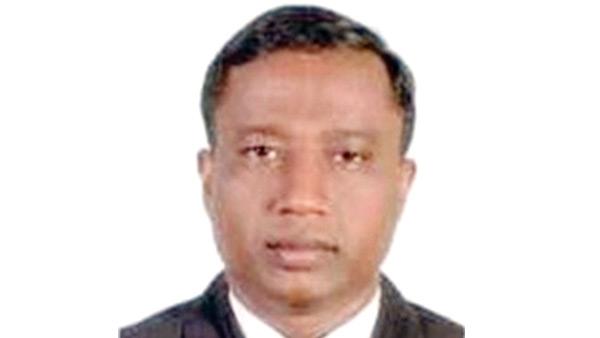
Agriculture is one of the oldest businesses in Sri Lanka. Its contribution to the national economy is immense. Agriculture is close to the lifestyle of the majority of the community.
The World Bank initiated the Agriculture Sector Modernisation Project (ASMP) in 2016/2017 to serve and award grants especially for export agriculturists in need. As of now, it has disbursed Rs. 4.8 billion among 947 agriculturists including cluster projects to enhance their value chain developments in their outputs, processes of 10 identified sectors.
The aims of the ASMP are to facilitate export agriculture, introduce import substitutes, provide livelihood for farmer families and employment creation. Key criteria to achieve these aims are through technology advancement, innovation and entrepreneurship. Since 2017, as of now the ASMP has awarded grants to prospective agriculturists to contribute and increase export revenue with the value additions in their products and processes.
The major sectors and sub-sectors considered for grants are horticulture, spices, other food and non-alcoholic beverages, fisheries, aquaculture, coconut (non-kernel), coconut (kernel based), medicinal and aromatics, livestock, agriculture machinery and equipment solutions. The machinery and equipment solutions sector is meant to provide solutions to other sectors to fulfil their machinery, packaging and other requirements.
Project Director of the ASMP Rohana Gamage in an interview with the Sunday Observer shared achievements of the ASMP and stressed the importance of ensuring the effective coordination and interference required from stakeholders on implementation of project activities.
Excerpts
Q: What is the purpose of establishing ASMP? How could it help in contributing to the economy?
A: According to the `Aide Memoire’ of the World Bank, the ASMP project has to comply three components; viz. value chain development in agriculture, productivity enhancement and diversification in agriculture processes. The third component is monitoring and evaluation of the success of the project which is a part of the project components. The ASMP’s contribution to the nation is mainly, through the enhancement of inflow of dollars to the country while reducing outflow of dollars from the country by introducing import substitutes. It also contributes to alleviate the poverty level and generates employment. It facilitated agriculturists who seek new developments of products and promoting them in the market.
Q: How do the stakeholder statutory bodies of yours support your process to achieve the targets?
A: Our immediate stakeholder statutory bodies are the Ministries of Plantation, Agriculture, Finance, EDB, CDA, CEA and NAQDA. Their timely support to execute the project proposals is acknowledged. Every project has to fulfill recommendations of environment, social and market perspectives. Statutory bodies’ intervention and support would make to comply the adequacy of statutory requirements.
For example, a project of aquaculture has to fulfill the necessities of CEA, NAQDA requirements while coconut based and coconut product related projects have to fulfill the requirements of CDA, CEA. The ASMP tries to maintain close rapport with these statutory institutions to obtain compliances to expedite the implementation of projects. This would facilitate the ASMP to release money granted in three tranches on time.
Q: What is the feedback of direct beneficiaries on your support for them? How did perform during the Covid-19 pandemic and the economic/political instability?
A: The impact of the pandemic on our proponents is mostly negative, nevertheless, some experienced positive outcomes due to high demand of their products in the overseas market, such as spices and cinnamon. The economic down-turn in the country and the dollar issue also impacted severely on proponents’ operations which resulted in some of the proponents withdrawing from the project. Some are waiting to commence their operations with high anticipations. Non import of inputs has retarded the accelerated operations, reduced the output volume and lowered the quality.
The general feedback of the proponents is encouraging despite drawbacks. They use grants awarded to them to the optimum. According to our database, the biggest amount of rupees is accorded to spices and horticulture sectors. Agriculturists made use of the money to optimise operations. The ASMP grants helped eradicate the white spot disease syndrome in shrimp by introducing a modified species (pathogen free). Grants supported to develop new organic fertiliser and organic pesticides.
The highest value of output in the coconut sector is for activated charcoal, which is used for many medicinal products, cosmetics, water purifications and most importantly for poisoned patients. Among the grants awarded to proponents, a sizable sum is awarded to the coconut sector. Leading exporters are among ASMP proponents. They use the grants to enhance the capacity and advance technology.
There are over 5,300 new employment opportunities generated as a result of ASMP grants.
Q: Can you comment on the way forward of the project after phasing out of the ASMP.
A: The ASMP has implemented a periodic monitoring mechanism which has reviewed and evaluated performances of proponents of the project. This helps us to evaluate their activities. The ASMP maintains a comprehensive database, GIS database with some mobile APPs to ensure continuous and strong network between the ASMP and proponents. These tools we use to make two-way communication with the proponents. At the termination point of the ASMP project, we phase out and hand over monitoring and evaluation activities to the subject ministry.
A few successful stories of the ASMP
Japanese cucumber (Gherkin) cultivation

Production of eco friendly food plates

Fabrication of food production machinery

This type of fabrication helps curtail the outflow of foreign currencies on machine fabrication in the food industry and encourages developing innovative devices. Machine precision is maintained with the use of the CNC device and plasma cutter purchased from ASMP funds.
